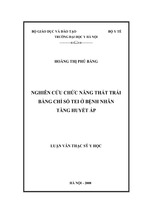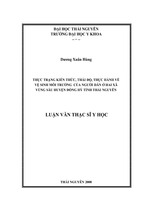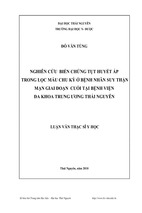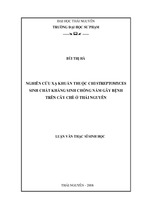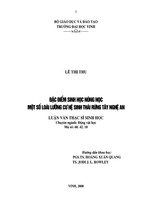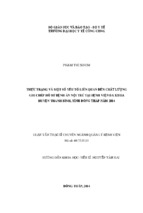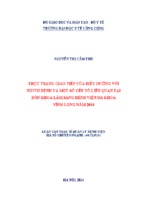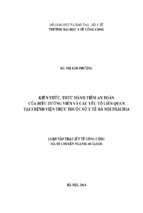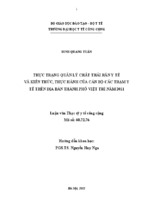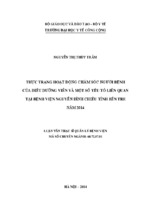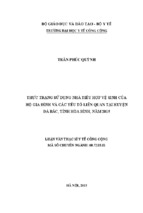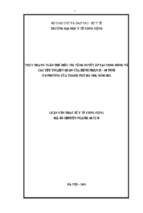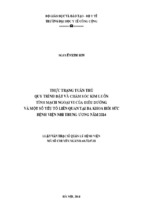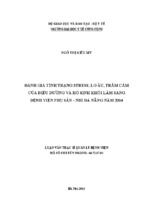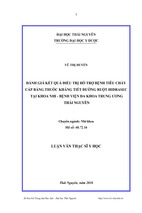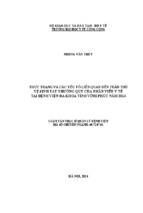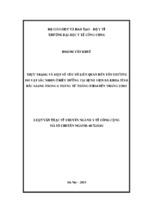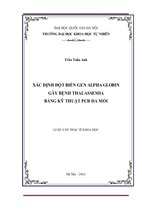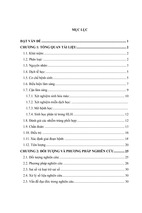The Hive:
Identity Construction within a Coworking Space
A dissertation submitted in fulfilment of the requirements for
the degree of Masters by Research
Wong Lijuan Abigail
(B. Bus Marketing)
School of Management
RMIT University
April 2015
ACKNOWLEDGEMENTS
The author wishes to acknowledge the support and assistance provided by the following
individuals and organizations during the course of this dissertation:
•
Dr. Tim Butcher
•
Ass. Prof. Helene Cherrier
•
The Coworking Space that gave me to opportunity to conduct my research in
•
The Interviewees for their time and effort
•
My family and friends for their undying support during tough times, especially to my
parents, Wong Hwa Cheong and Lee Mei Lyn Patricia
•
My partner in good and bad times, Mitchell Osborne Purser
•
My Level 9 colleagues, who never fail to support and offer their assistance especially
during tough times, I can never thank you enough:
o Bamini Balakrishnan
o Oscar Dousin
o Siti Maliza Salleh
o Ploy Su
i
Table of Contents
ACKNOWLEDGEMENTS ..................................................................................................... i
ABSTRACT .............................................................................................................................. 1
INTRODUCTION.................................................................................................................... 2
1.1 Background of Research ...................................................................................................... 3
1.2 Brief Introduction of the Coworking Space ......................................................................... 4
1.3 Research Aims and Objectives ............................................................................................ 5
1.4 Methodological Overview ................................................................................................... 6
1.5 Summary of this Dissertation............................................................................................... 7
LITERATURE REVIEW ..................................................................................................... 10
2.1 Introduction ........................................................................................................................ 11
PART A- Coworking Literature........................................................................................... 13
2.2 Introduction to Coworking ................................................................................................. 13
2.2.1 What is Coworking? ....................................................... Error! Bookmark not defined.
2.2.2 The Values of the Culture of Coworking ........................................................................ 19
2.2.3 Why people cowork? ...................................................................................................... 22
2.2.4 Who are coworkers? ....................................................................................................... 24
2.2.5 Conclusion ...................................................................................................................... 25
PART B - Organizational Culture, Identity & Image ........................................................ 27
2.3 Introduction ........................................................................................................................ 27
2.3.1 Hatch and Schultz’s Organizational Identity Dynamics Model ..................................... 28
2.3.2 Organizational Culture ................................................................................................... 32
2.3.3 Conclusion ...................................................................................................................... 34
PART C - The Constructs of an Individual’s Identity ....................................................... 35
2.4 Introduction ........................................................................................................................ 35
2.4.1 An Individual’s Identity .................................................................................................. 36
2.4.2 The Self and Generalized Other ...................................................................................... 38
2.4.3 Othering .......................................................................................................................... 41
2.4.4 Identity Work in Organizations ...................................................................................... 42
2.4.5 Identity Regulation and Control...................................................................................... 45
2.4.6 Conformity and Resistance ............................................................................................. 48
2.4.7 Organizational Archetypes.............................................................................................. 49
1
2.3.8 Conclusion ...................................................................................................................... 52
RESEARCH METHODOLOGY ......................................................................................... 54
3.1 Introduction ...................................................................................................................... 55
3.2 Research Methods ............................................................................................................ 55
3.2.1 Qualitative Research Methodology................................................................................. 55
3.2.2 Interpretivist Epistemology ..................................................................................... 56
3.2.4 The Role of Ethnographers ............................................................................................. 60
3.2.5 Reflexivity and Subjectivity ........................................................................................... 62
3.2.6 Why a Single Case Study? .............................................................................................. 66
3.3 Research Design ............................................................................................................... 67
3.5 Research Outline .............................................................................................................. 67
3.5.1 Participant Observation (Real-life Identities/Communities) .......................................... 68
3.5.1.1 Data Collection (Participant Observation) ........................................................... 70
3.5.2 Netnography (Online Identities/Communities)............................................................... 70
3.5.2.1Ethnography on the Internet .................................................................................. 70
3.5.2.2 Private Social Networks - Yammer ...................................................................... 71
3.5.2.3 Use of Images, Technology in Ethnography ........................................................ 72
3.5.2.4 Data Collection ..................................................................................................... 73
3.6 Data Analysis .................................................................................................................... 73
3.6.1 Introduction ..................................................................................................................... 73
3.6.2 Why use Grounded Theory? ........................................................................................... 74
3.7 Researcher’s Role............................................................................................................. 78
3.8 Ethical Issues .................................................................................................................... 80
RESEARCH FINDINGS & ANALYSIS ............................................................................. 82
4.1 Introduction ...................................................................................................................... 83
4.2 The Doing of Coworking ................................................................................................. 84
4.2.1 The Ballroom............................................................................................................... 85
4.2.2 Mixed Bag Lunches .................................................................................................... 89
4.2.3 The Second Level ........................................................................................................ 92
4.3 The Hive’s Culture & Image ........................................................................................... 98
4.4 Setting the Scene ............................................................................................................ 103
4.5 Identities Constructed within the Hive - Coworking Archetypes ............................. 110
4.5.1 Identity 1: The Nostalgic ........................................................................................... 111
2
4.5.2 Identity 2: Corporate Refugees ................................................................................. 114
4.5.3 Identity 3: The Outsider ............................................................................................ 118
4.5.4 Identity 4: The Self-Imposed Exiles.......................................................................... 121
4.5.5 Identity 5: Collaborative Isolators ............................................................................. 123
4.7 Summary of Findings .................................................................................................... 124
DISCUSSION & IMPLICATIONS ................................................................................... 128
5.1 Dissertation Summary ................................................................................................... 129
5.2 Implications to the Hive................................................................................................. 131
5.3 Recommendations for the Hive..................................................................................... 133
5.4 Research Limitations .................................................................................................... 135
5.5 Theoretical Contribution............................................................................................... 137
5.6 Future Research ............................................................................................................. 138
5.7 Conclusion ...................................................................................................................... 138
REFERENCES ..................................................................................................................... 141
APPENDIX ........................................................................................................................... 147
Appendix 1: Research Plain Language Statement ............................................................. 147
Appendix 2 – Interview Questions ..................................................................................... 152
3
ABSTRACT
The concept of coworking caters to freelancers and entrepreneurs who not only seek a shared
office space but also be part of a socially bound group with similar ideas and goals. The aim
of providing a space that fosters collaboration, sense of community, enhances creativity and
sustains communication within a diverse group of independent professionals. Whilst the
concept has flourished over the span of 10 years, little is known of the participants’
experiences within coworking spaces and whether such spaces do deliver what it promises.
Based on 3 months of ethnographic work at the Hive, a coworking space that started in 2011,
I explored the way these coworkers construct their identities within the space itself. I have
identified conflicting perspectives which presented the following coworking archetypes: The
Nostalgic, Corporate Identities, The Outsider, Self-imposed Exiles and Collaborative
Isolators. These archetypes are troubling in that they do not seem to reflect the intended
images and cultural aims of a coworking space.
Key words: Coworking, Culture, Identity, Image, Space, Ethnography
1
Chapter 1
INTRODUCTION
2
1.1 Background of Research
The concept of work is no longer constricted to the confines of a selected space (e.g. an
organization, a building, a cubicle). Instead, professionals now have the freedom to work
away from the office, given the advancement of technology; work can now be done through
technological tools such as the laptop or mobile device. However, the freedom to work away
from the office comes with the price of losing elements of social and emotional attachments
to other individuals which leads to isolation, inability to trust, the lack of relationship with
others and restricted opportunities for collaboration and networking (Spinuzzi 2012). It is due
to these reasons that these professionals now seek alternative spaces where they can work
together. Therefore, the changes in technology, space needs, and attitudes towards the
traditional work environment have combined to create a new type of office space usage called
Coworking.
The emphasis of values such as collaboration, community, diversity, sustainability, openness
and accessibility are strongly emphasised within the coworking community (Butcher 2013;
Kwiatkowski & Buczynski 2011a, 2011b; Spinuzzi 2012; Stumpf 2013). Coworking
management encourages social interaction with other coworkers and promote the concept of
community building through organized weekly social events. In comparison to a bureaucratic
traditional organization, they relinquish the notion of hierarchical management and regulation
and control. In other words, they shun from the rigidity and structural regulatory system most
bureaucratic organizations place upon their employees (Butcher 2013; Foertsch & Cagno
2013).
An individual’s self and social identities are constantly at interplay, where the notion of one’s
self is negotiating with our social selves. In other words, we are constantly adjusting our
identities to suit the circumstance, environment and people around us (Brown, AD 2001;
3
Whetten & Mackey 2002). That constant adjustment of identities leads me to the exploration
of the extant literature called identity work. Empirical evidence and research has continually
emphasised how much people have to work to manage their identities in different social
environments, especially in organizations (Albert, Ashforth & Dutton 2000b; Alvesson,
Ashcraft & Thomas 2008; Haslam & Ellemers 2005; Watson 2008).
Research on identity work within organizations spans across organizational research where in
most cases, the outcome of these researches seem to outline several pressing issues such as
the degree of identification individuals formulate their organizational identities with (Albert,
Ashforth & Dutton 2000a), identifying an optimal balance between self-identity and social
identity (Kreiner, Hollensbe & Sheep 2006), the negotiation of tension between conflicting
identities (Watson 2008) as well as identity struggle (Sveningsson & Alvesson 2003).
However, no research has been done in regards to how people construct their identities within
a coworking space. Therefore, my research seeks to use the literature gathered from identity
work to see how coworkers interact and form their identities from the coworking space’s
perceived organizational identity and the social groups that surround them within that space.
1.2 Brief Introduction of the Coworking Space
This research is conducted within a coworking space in Melbourne. However, out of respect
for the coworking space’s privacy, a pseudonym will be used to protect the identity of the
coworking space as well as its members. For this research, the coworking space will be
renamed as The Hive.
The Hive is a coworking space that was first introduced into Melbourne in March 2011. The
Hive is a coworking professional space specially catered to individuals from various business
sectors, focusing on budding entrepreneurs as well as start-ups. There is currently an
approximate of 320 Hive members in Melbourne.
4
They emphasize on the very aspect of being part of a community and promote the
collaborative and supportive structure that is deemed to be lacking in a conventional
workspace. Their emphasis of ‘socialness’ and ‘interaction’ between its members have been
portrayed through active weekly events such as Mixed Bag Lunches, Friday Wine-downs
organized by Hive’s community catalysts. These catalysts act as facilitators that have a strong
sense of community building who encourage Hive members to socially collaborate with each
other as well as keeping the coworking spirit alive with social events organized within or
outside the Hive.
1.3 Research Aims and Objectives
This dissertation has been developed to understand how coworkers construct their identity
within the Hive. With literature supporting the notion of identity construction such as identity
struggle, organizational identification, identification of optimal balances between self and
professional identities within traditional bureaucratic organizations, the aim of this
dissertation seeks to determine how identity work is being constructed within a coworking
space in a single case study.
To achieve of this aim, the following research questions are developed in chapter 2.
How do coworkers construct their identity within a coworking space?
o What is the Hive’s organizational identity through its culture and image?
o How do the members of the Hive cowork?
o What are the different identities portrayed within Hive?
To answer the main research question, it is necessary to firstly determine the Hive’s
perceived organizational identity through the projection of its culture (assumed values,
cultural artefacts) and image (external marketing activities). Secondly, by looking into the
5
definition of a coworker allows me to gain deeper meaning as to what it means to participate
as a coworker/member with and within the Hive. Finally, the exploration of the different
identity portrayals/coworking archetypes within the Hive offers me insight as to whether it
reflects and corresponds towards Hive’s perceived identity.
1.4 Methodological Overview
This research is an ethnographic study of the Hive over a period of three months. I was fully
embedded within the coworking space as part of the community and actively participated in
weekly social events and engaged in relationship building and discussions with my fellow
coworkers. The primary ethnographic methods used in this research were participant
observation and Netnography.
In this research, I look into how an individual socially constructs his/her identity/identities
within the coworking space. As Dingwall (1997) suggests, there are three broad ways of
studying social phenomenon such as identity work qualitatively. The three ways are: asking
questions, hanging out and reading texts. Alvesson et al (2008) also state that the nature of
identity is too complex and too processural of a character to be measured by quantitative
methods. In their opinion, they mention that the methods most suited for the study of identity
work would have to be interviews, participant observation and reading contextual cues and
observation of behaviour.
6
1.5 Summary of this Dissertation
This dissertation has been divided into four key parts to enable a logical representation of the
literature, the empirical research findings and their implications.
Chapter 1 provides the context in which the dissertation has been undertaken, including the
research problem, dissertation background and the research objectives. This is essentially the
role of the chapter.
Chapter 2 presents the conceptual foundations for the dissertation as found in current
literature. This chapter will be sub categorized into four different parts:
Part A – Coworking literature
Part A examines the limited emerging coworking literature and how it differs from that of a
traditional organization. This section describes what coworking is, who are the coworkers as
well as the values and culture of a coworking space based on current literature. It also seeks
to ‘set the scene’ by introducing coworking as a new way of work and point out the literature
gaps.
Part B – Organizational Culture, Identity and Image
Part B explores organizational identity literature which led me to Hatch and Schultz’s (1997,
2002) Organizational Identity Dynamics Model. It demonstrates that organizational identity
is similar to the concept built upon an individual’s notion of identity. An organization’s
identity is constructed upon the notion that both culture and image are constantly at interplay
with an organization’s identity. The adoption of this model provides me with a framework in
regards to understanding The Hive’s organizational identity through their cultural artifacts
and projected image surrounding the space.
7
Part C – The Constructs of an Individual’s Identity
Part C describes the theory of identity work of an individual as well as of a collective. It
summarizes the reflexive notion of identity and how identity constantly evolves through time,
space as well as situational cues. It is essential to understand the concept of identity
construction within the individual as the organization in order to understand the identity
constructs of the individual within the organization. In this study, the main theories that I
follow are Mead’s (1934) notion of the Self and Generalized Other as well as Berger and
Luckmann’s (1966) Theory of Social Construction.
This section also explores the literature in regards to identity theories found within a
bureaucratic organization such as Organizational Regulation and Control as well as
Conformity or Resistance. The exploration of these aspects of identity theories inform me of
the possible identity constructs within The Hive and provide me with a background in regards
to the types of identity portrayal within the Hive on an internal as well as external level.
Chapter 3 discusses in detail the research design adopted by the dissertation to make sense
of the Hive’s organization identity and the identity construction of its members. This research
is purely qualitative which focuses on ethnographic methods such as participant observation
(for observation of physical space/identities) as well as the use of netnography (for
observation of virtual space/identities). This chapter also discusses the dissertation’s data
analysis process and presentation.
Chapter 4 presents the findings of empirical research undertaken as part of this dissertation.
It is a collection of field notes and recorded conversations with Hive members over a span of
three months. The data is reported in a predominantly narrative format, containing direct
quotes from the respondents and experiences that I have observed during the data collection
8
period. This chapter also presents and analyses the findings generated by the key identity
constructs found during the research period.
Chapter 5 discusses the implications of the dissertation’s findings in terms of the conceptual
framework of the literature review and research objectives, its implications for the Hive and
the coworkers as well as its contribution to literature. The discussion draws on the main
points of the dissertation to a close and present recommendations and suggestions for future
research.
9
Chapter 2
LITERATURE REVIEW
10
2.1 Introduction
The aim of this chapter is to provide a theoretical background by reviewing relevant literature
on the key concepts of this study. This research provides a basis of understanding on the
identity of a coworking space through its culture and image, and how coworkers construct
their identities with the perceived identity of the space and those within it. This chapter will
be sub categorized into three different parts: (i) Part A – Coworking Literature (ii) Part B –
The Constructs of an Individual’s Identity (iii) Part C – Organizational Culture, Identity and
Image .
Part A – Coworking literature
Part A examines the limited emerging coworking literature and how it differs from that of a
traditional organization. This section describes what coworking is, who are the coworkers as
well as the values and culture of a coworking space based on current literature. It also seeks
to ‘set the scene’ by introducing coworking as a new way of work and point out the literature
gaps.
Part B – Organizational Culture, Identity and Image
Part B explores organizational identity literature which led me to Hatch and Schultz’s (1997,
2002) Organizational Identity Dynamics Model. It demonstrates that organizational identity
is similar to the concept built upon an individual’s notion of identity. An organization’s
identity is constructed upon the notion that both culture and image are constantly at interplay
with an organization’s identity. The adoption of this model provides me with a framework in
regards to understanding The Hive’s organizational identity through their cultural artifacts
and projected image surrounding the space.
11
Part C – The Constructs of an Individual’s Identity
Part C describes the theory of identity work of an individual as well as of a collective. It
summarizes the reflexive notion of identity and how identity constantly evolves through time,
space as well as situational cues. It is essential to understand the concept of identity
construction within the individual as the organization in order to understand the identity
constructs of the individual within the organization. In this study, the main theories that I
follow are Mead’s (1934) notion of the Self and Generalized Other as well as Berger and
Luckmann’s (1966) Theory of Social Construction.
This section also explores the literature in regards to identity theories found within a
bureaucratic organization such as Organizational Regulation and Control as well as
Conformity or Resistance. The exploration of these aspects of identity theories inform me of
the possible identity constructs within The Hive and provide me with a background in regards
to the types of identity portrayal within the Hive on an internal as well as external level.
12
PART A- Coworking Literature
2.2 Introduction to Coworking
Seeing that the introduction of coworking is relatively new and there is a significant lack of
scholarly articles on coworking, this section would lean towards a more descriptive nature, in
which it describes and summarizes what the literature (both scholarly and non-scholarly
articles) says about coworking. Most of the scholarly literature read in coworking is seen to
be cohesive and concise, in terms where they promote the notion of a collaborative
community and innovative culture (e.g. Spinuzzi 2012, Stumpf 2013, Tadashi 2013
Kwiatkowski & Buczynski 2011a, 2011b).
The strong rejection of traditional organizational culture is evident in the available research
conducted on coworking, where they readily promote the notion of being ‘who you are’ and
reject the notion of being confined within a regulatory structure. This rejection of traditional
organizational culture and values is what I am intrigued about in this research in terms of how
the individuals within this unique space interact and form their identities in accordance to the
culture and values put forward by the people who discover coworking. The question I ask is
whether there is a significant difference in the way people act just because there is a change
in culture. Therefore, in this section I seek to introduce how coworking came about, what it
is, who coworks, why they cowork as well as the values and culture a coworking space
exudes in order to provide a comprehensive background of coworking as I can.
13
The Rise in Coworking
As times change and technology advances, the concept of working is no longer confined to
the restrictions of a cubicle, a desktop within an organization. The rise in technology has been
a major catalyst that results in the shift in how and where people work for reasons such as the
rapid dissemination of information, increased communication, and the allowance of
independence and freedom to work in as well as outside of the office (Green 2014b). A
prediction Toffler made in 1980 (pg. 26) started the revolutionary shift in the dynamic of
working culture where he states that personal computing would lead to the “electronic
cottage” in which individuals could work from home instead of a designated work area.
This concept brought about new literature in regards to how the advancement of technology
promoted mobility and flexibility for an individual to work away from the constraints of
organizational walls (Geisler 2001; Kjaerulff 2010; Spinuzzi 2012; Stumpf 2013).
Digitization has brought about the ‘digital nomad’(Kleinrock 1996), a single individual that
brings about the concept of working ‘here, there and everywhere’ (e.g. home, cafes, libraries,
buses, trains, etc.) (Kleinrock 1996; Liegl 2014). The introduction of the digital nomad may
seem possible seeing that the rise of technology has brought about the freedom of work
mobility, where the physical presence of the individual is no longer needed in a specific
space. However, it may seem that working from home or away from the office (e.g. cafes,
libraries, etc.) are lacking in certain (e.g. social, physical) aspects of what an individual
craves, mainly the lack of communicative networking, limited access to infrastructure and a
need for firm Barriers between their social and professional lives. Research by Kjaerulff
(2010) explored how teleworkers struggled in the separation of the social and professional
lives and tried to rectify their social dilemma with the constant socialization of other
teleworkers during weekly lunches. In conjunction to the previous research, Clark (2000)
14
found that rural teleworkers found it a challenge to ‘professional isolation’ and constantly
sought out social and emotional attachments through the network of other freelancers.
The concept of work has shifted accordingly to the confines of a selected space (e.g. an
organization, a building, a cubicle). Instead, professionals now have the freedom to work
away from the office, given the advancement of technology; work can now be done through
technological tools such as the laptop or mobile device. However, it may seem that the
element of ‘socialness’ and interactionism between likeminded individuals are void when
professionals choose to work in isolation. According to Spinuzzi 2012, the introduction of
coworking spaces aid in ‘providing a space for likeminded individuals to cowork together’
(pg. 25). The idea behind coworking is to help promote innovative collaboration and
community life for those ‘likeminded individuals’ within a space ‘in which they can foster
and build social relationships as well as grow their (Kwiatkowski & Buczynski 2011a,
2011b; Tadashi 2013). Seeing that coworking is still considered relatively new in the
organizational world, in the next section, I seek to provide a comprehensive view of the what,
who, how and why of coworking through existing literature.
15
- Xem thêm -

